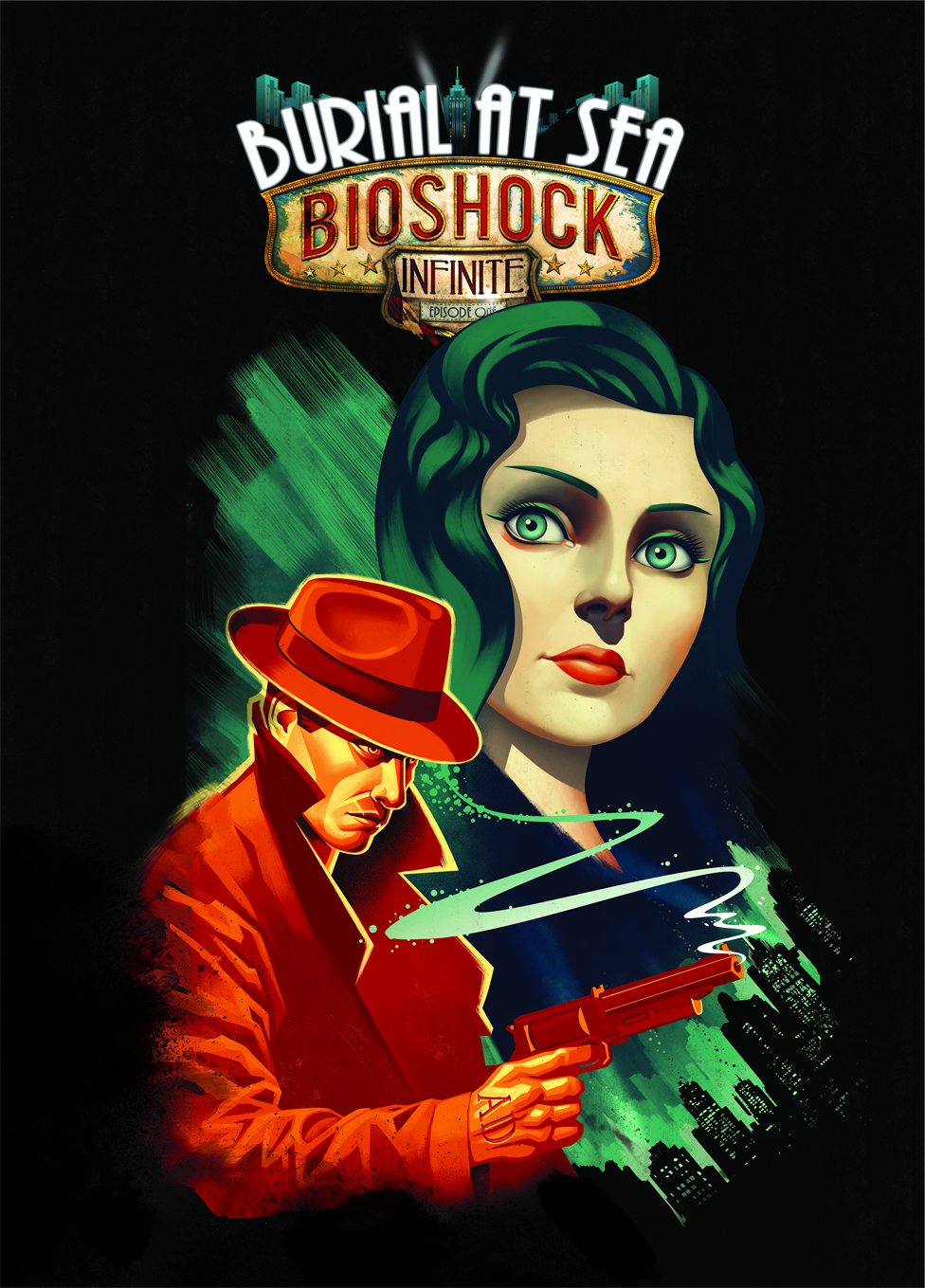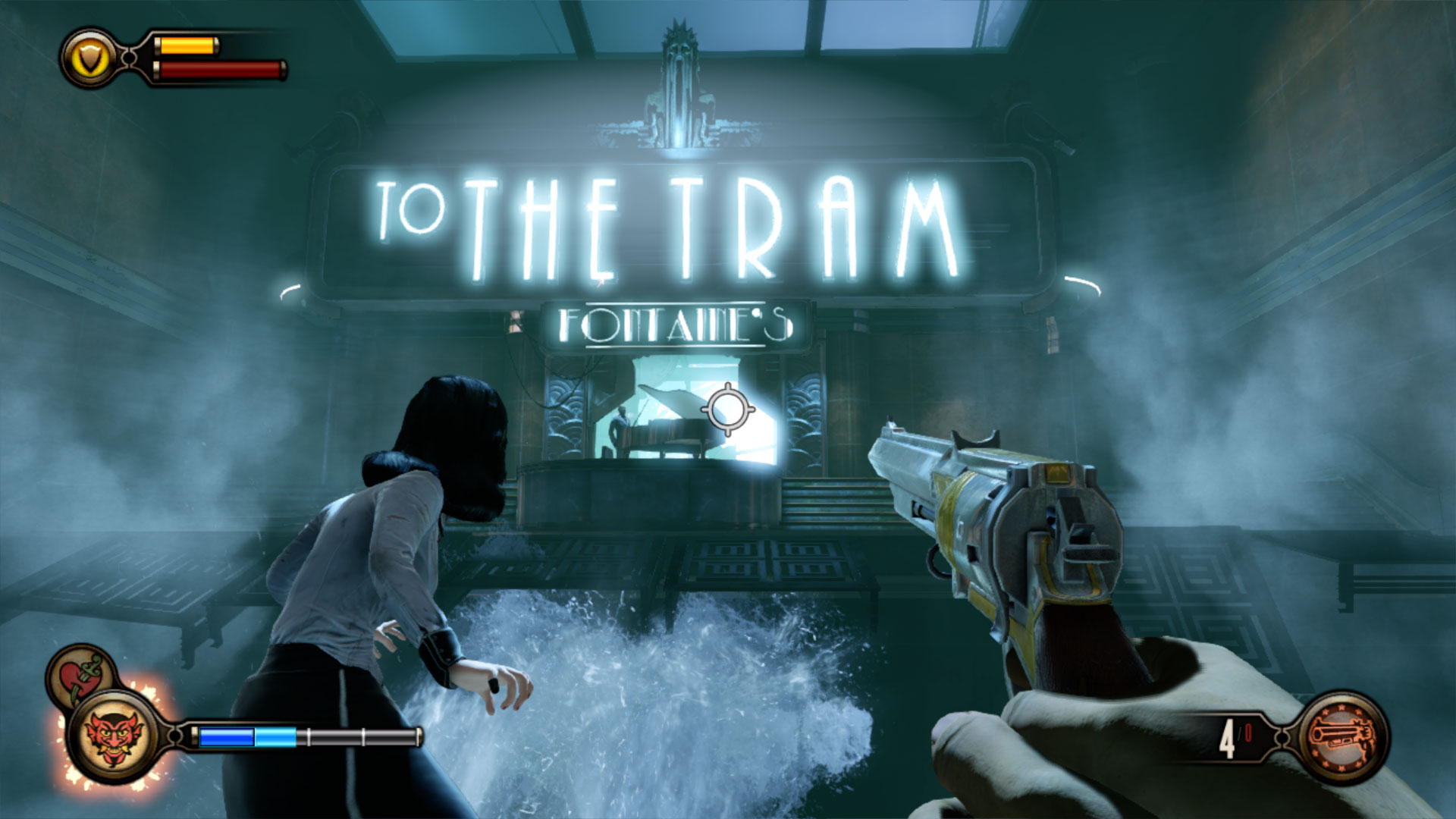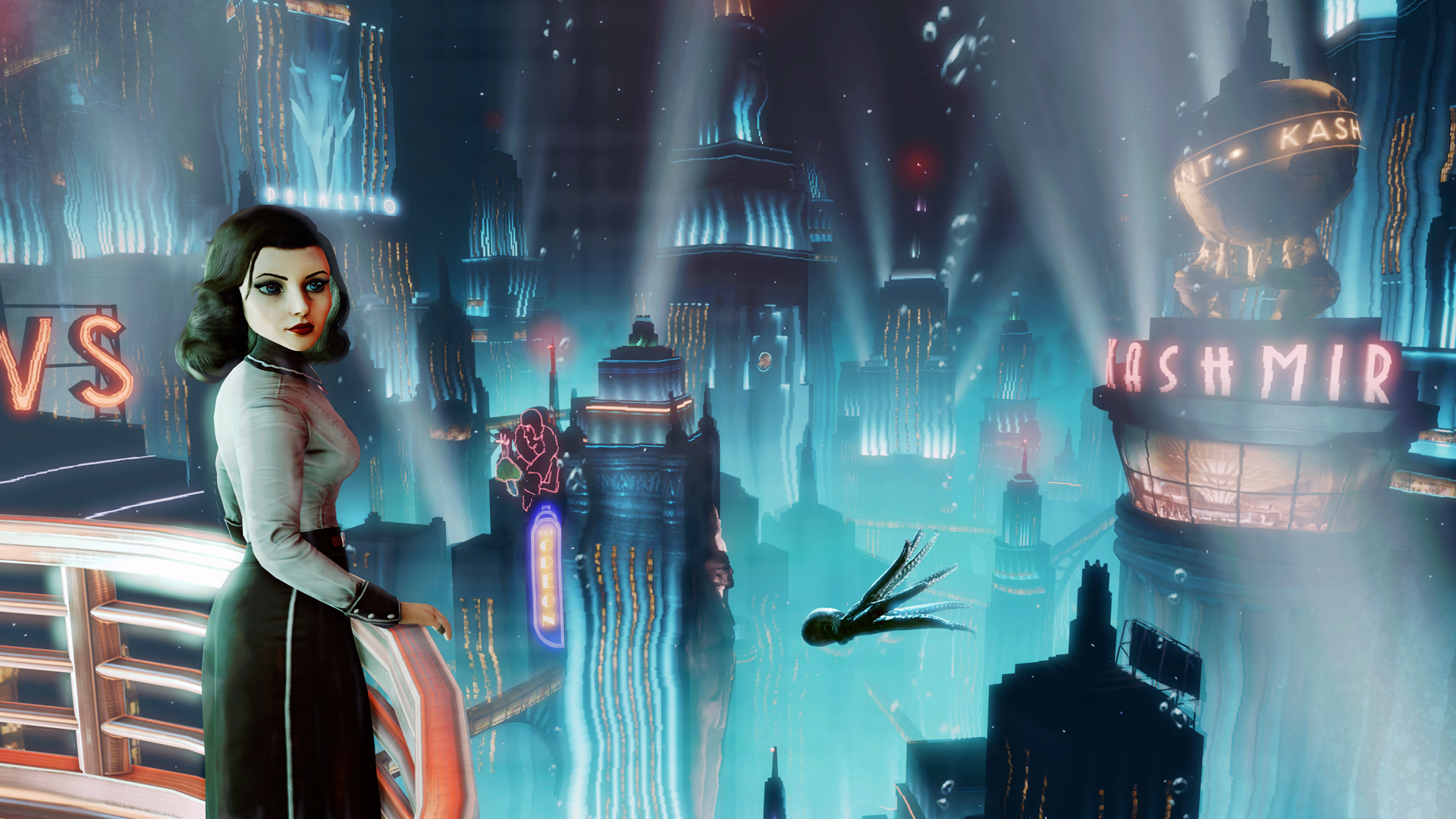Bioshock Infinite: Burial at Sea
 I could be talking about a slew of other video games (honestly, I've recently played The Last of Us, among others), but when Ken Levine announced the shutting down of Irrational Games, the developer of the Bioshock franchise, I was feeling a mixture of distress and relief. On the one hand, Ken Levine would be focusing on catering to the gamers within a smaller company. On the other hand, there will be no more brilliant additions to the Bioshock canon.
I could be talking about a slew of other video games (honestly, I've recently played The Last of Us, among others), but when Ken Levine announced the shutting down of Irrational Games, the developer of the Bioshock franchise, I was feeling a mixture of distress and relief. On the one hand, Ken Levine would be focusing on catering to the gamers within a smaller company. On the other hand, there will be no more brilliant additions to the Bioshock canon.
So, after having finished Irrational Games' final DLC release for Bioshock Infinite, I thought it was appropriate to review one of my favorite franchise games of all time.
Well, technically I already reviewed Bioshock Infinite a year ago, but the creators didn't just stop the story at the Infinite ending. In fact, with the multitude of fans clamoring for further downloadable content, Irrational Games (under the leadership of Ken Levine) produced three DLCs for Bioshock Infinite, two of which were stories that mix Infinite with its flagship original, Bioshock.
If you didn't know anything about the Bioshock franchise and wonder what this game and Infinite have in common, I would have to say Rapture and Columbia. For those who have heard of either game (or played both), then it's easy to tell that Infinite's floating city of Columbia is a parallel to Rapture, the underwater "paradise" of capitalist Andrew Ryan. Of course, the ideologies of creating either city are different (one was under religious auspices, while the other was made for economic reasons), and the characters behind them are certainly their own personalities. But it's a starting point.
Now be prepared, because spoilers are a'comin'! (I tried to be as limited as possible, but considering I'm reviewing a DLC, there will be a certain amount of spoilers).

Burial at Sea (BaS) pays homage to Rapture, whilst still remaining a Bioshock Infinite story. When I viewed the trailers of BaS, I had initially thought that the story would be a complete disconnect from both Bioshock and Infinite. In fact, I thought it was just another way to cater to the fans by giving us more character study inside Booker DeWitt and Elizabeth. However, after having played and finished the DLC, I realized that BaS aimed not only to give us a character study of Infinite's main characters, but also to answer a lot of questions that had sprung up from Infinite's brain-busting ending.
BaS is split up into two episodes. Episode 1 focuses on the point of view of Infinite's playable character, Booker DeWitt. In the first episode, Booker is enlisted by a mysterious yet familiar woman to search for and save a child within Rapture. Much like in Infinite, Booker must brave the dangerous streets of an extraordinary city; this time, however, the backdrop is underwater Rapture, not the floating city of Columbia. Still, many of the battle systems and controls are similar; Booker is still able to use various gears, weapons, and Vigors--though in the case of BaS, the terms used in Infinite have been changed to be immersive to Rapture's environment. Example: the Infinite Sky-Hooks, Sky-Lines, and Vigors are now referred to as Air Grabbers, Pneumo Lines, and Plasmids, respectively. For the most part, Episode 1 is a short play of what seemed like a separate entity in itself. It's got Booker and Elizabeth, it's got Rapture, and it's got recurring characters from both Bioshock and Bioshock Infinite.

By the end of Episode 1, however, BaS takes a turn to a more complicated plot, and suddenly, the tables have turned. Continuing from the events of Episode 1, BaS Episode 2 switches the point of view to Infinite's non-playable main character, Elizabeth. Guilt-ridden and intent on fixing her mistakes, Elizabeth returns to Rapture for a final attempt at saving the girl, Sally. Now, I could probably go on about how awesome this switch in POV is, considering that Elizabeth not only gets her spot on the playable limelight, but that she is also a playable female character (and, honestly, that first scene in Paris with Edith Piaf's "La Vie en Rose" in the background already made me swoon with absolute happiness). That in itself changes many things about the gameplay, one of which is the degree of violence within the game. Right from the start, it is clear that Elizabeth is not Booker DeWitt in a dress. The gameplay is redefined as such to play on Elizabeth's skill set; in this case, it is stealth, not brute strength.
So you can imagine my delight when BaS went from a first-person shooter to a first-person stealth game. While the durable and resilient Booker can manage to recover from brute attacks, Elizabeth is not of a similar build and would most likely perish after one hit from a Big Daddy (trust me, this is tried and proven). Much like what she did in Infinite as a sidekick, Elizabeth must use her stealth, cleverness, and extremely fabulous lock-picking skills to get through the dangers of Rapture. Of course, the gamer can choose to have Elizabeth kill her enemies, but it is clear that BaS gives a more rewarding experience if the gamer chooses a more non-lethal route to getting things done. If all else fails, there are always the air vents.

There are a lot more things I could gush about regarding Bioshock Infinite: Burial at Sea. As a major Bioshock fan, BaS took me back to the beginning, to Rapture, to the events that happened before Bioshock, and to the events that happened after Infinite in a wibbly wobbly timey wimey fashion. The DLC showcased characters from both games--which, admittedly, thrilled me in all respects--and further developed the interaction between Booker and Elizabeth (which, to be honest, I loved, because I'm a sap for father-daughter-type relationships). Burial at Sea took me full circle, and even with the DLC's ending sending my brain to emotional apocalypse, I couldn't help but sigh at the closure of Irrational Games' swan song.
Needless to say, I loved the DLC, and I'm still reeling from the ending.
Game: Bioshock Infinite: Burial at Sea
Released: November 2013, March 2014
Genre: First-person shooter and stealth
Developer: Irrational Games
ESRB Rating: M for Mature (for dark themes and violence, so not good for the kiddies!)






